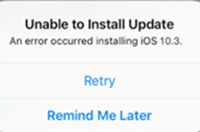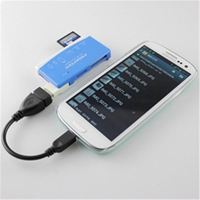Android Data Recovery
There are several steps to properly develop mobile Android applications. Android is one of the most popular and widely used operating systems in the world. With consistent increases in popularity, many mobile app engineers like yourself are considering how to build high-quality Android games and programs. With advanced programming resources, the mobile app development process has never been easier. If you are interested in the essential stages of mobile app configuration, read on to learn about the essential steps to develop mobile Android applications.
Select A Coding Language
The first step to build your mobile Android application is to determine an appropriate coding language. Coding is an essential component of Android app development. The right programming language ensures that you can properly customize and ensure consistent functionality of your mobile application. To develop Android programs, many developers cite the importance of learning to code in Java. However, there are many other digital programming resources to write high-quality Android apps. One of the most popular coding languages as of recent is Google’s GoLang. Working with GoLang allows app developers to access a number of sophisticated programming resources, such as the Central Go Modules Repository. Here, you can access a number of Go bindings, scripts, and additional useful information. One of the popular resources is the Protobuf GoLang module, which contains an updated and simplified API, support for protobuf reflection, and many other improvements for application development. To start building high quality Android applications, be sure to learn a compatible digital programming language.
Adjust Responsive Settings
After designing the content for your Android application, you need to adjust your responsive application settings. Android development resources provide a number of sophisticated tools to help your adjust your settings to different devices. Android operates a number of different cell phones, smartwatches, home devices, and tablets. To ensure your applications are able to operate properly on unique devices, Android app builders allow you to create customized responsive layouts for different screen sizes or operating systems. At the same time, your application needs to be able to detect specific hardware. For example, if your mobile app uses a camera or accelerometer, these functions may not be available on smartwatches or home devices. When features are unavailable, your application should easily be able to disable the corresponding features for a seamless operating experience. Be sure to adjust your responsive settings so that your app operates seamless on all Android devices.
Access Community Support Resources
It is essential to access community support resources throughout your mobile Android application development process. Even if you are an expert developer, you still may need help along the way. Building an mobile app can be an incredibly complex and challenging process. Luckily, there are dozens of community support resources to help you navigate the process. Access community forums, notable webinars, articles, white papers, screencasts, and use cases. At the same time, access additional support through a sophisticated application development knowledge base. These resources can help you through troubleshooting, problem solving, and improve the quality of your Android app. Even more, you can use the experience of the development community to get unbiased feedback on your idea. Whenever you face a problem during the application building process, be sure to access community support resources.
Conduct App Testing
Before you can launch your Android application, you need to conduct sufficient testing. Proper testing is essential for mobile app quality assurance. Testing mobile applications is an essential portion of the development process. Running consistent, thorough tests is integral to ensure your applications functionality, correctness, and usability. When you process a mobile app test, you can receive immediate feedback on operational failures. This allows you to safely refactor and optimize your code without worrying about associated regressions. Once properly conducted, these tests provide rapid failure detection and consistent programming velocity.
Deploy Your Mobile Application
Once you are confident in the quality of your Android program, you need to deploy your mobile application for release. After conducting sufficient application planning, building, and testing, you need to prepare your written code for release. Remove any log statements, then set your Android versionCode and versionName. Following these steps ensures that you can properly configure a release-ready Android application package, or APK. An Android Package is the file format utilized for the distribution and installation of mobile applications. Once prepared, make sure you sign your APK with a certificate to acknowledge your ownership. Then, you can easily create a formalized Production Release and upload your Android Package. Once you have prepared your Android program, you need to deploy your mobile app.
There are several comprehensive steps to properly configure Android applications. Before you can start building a mobile app program, you first need to select a compatible coding language. Once you have decided on your programming tools, you need to adjust your application for different device responsive designs. Access community support resources whenever you face a problem throughout the development process. Then, conduct sufficient testing on the program you have created. Finally, once you are confident in the quality and functional behavior of your Android program, you can deploy your mobile application publicly. Consider the points mentioned above to learn about the essential steps to develop mobile Android applications.




















